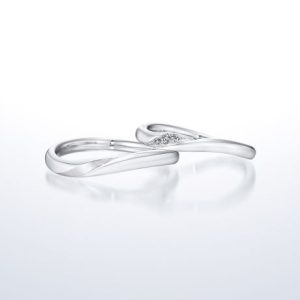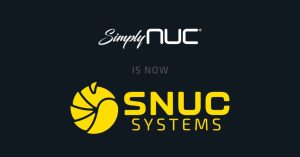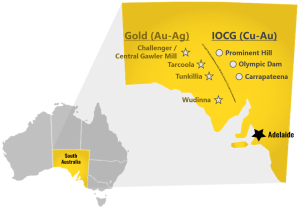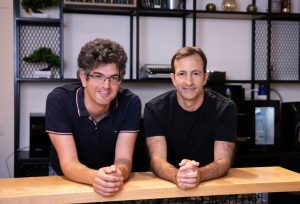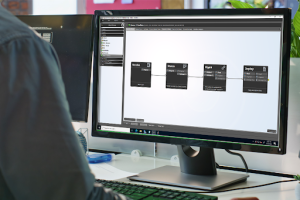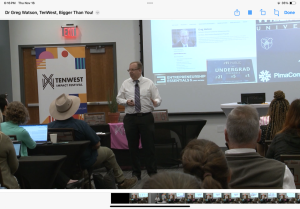In an effort to better educate patients and empower them to take the next step toward visual freedom, Brinton Vision has released a new, comprehensive Vision Correction Comparison Chart. The chart offers side-by-side comparisons of the most advanced refractive surgery options available today, including LASIK, SMILE, PRK, EVO ICL, and Custom Lens Replacement (CLR), as well as traditional options like glasses and contact lenses. As the only vision correction center of its kind in Missouri that offers all seven modern procedures under one roof, Brinton Vision is uniquely positioned to provide a full spectrum of information for patients exploring permanent solutions to rid yourself of glasses and contacts.
Many individuals researching vision correction are familiar with LASIK but are unaware of how far the field has evolved in recent years. This new chart is designed to eliminate confusion by presenting the facts in a simple, visual format, comparing technologies, recovery timelines, age ranges, prescription types, invasiveness, and long-term outcomes. The data-driven tool is accompanied by downloadable formats including a PNG image, PDF document, Google Sheet, and a full table view on the Brinton Vision website to make it accessible and easy to use across devices.
According to Dr. Jason Brinton, founder of Brinton Vision and Harvard-trained LASIK and refractive surgeon, the goal of the comparison chart is to give people the clarity they need to make confident choices about their vision. “Every eye is different, and there’s no such thing as a one-size-fits-all procedure when it comes to vision correction,” said Dr. Brinton. “This chart gives patients a starting point to understand their options and helps frame the conversation we have during their Brinton Vision Ocular Analysis.”
The chart breaks down meaningful differences between procedures that may appear similar at first glance. For example, both LASIK and SMILE reshape the cornea using laser technology, but SMILE is a minimally invasive procedure that avoids creating a corneal flap, making it ideal for patients with dry eyes or those who lead highly active lifestyles. LASIK, by contrast, offers faster visual recovery—often within one to two days—and can treat a broader range of prescriptions, including hyperopia, which SMILE cannot address. These distinctions matter when determining the right solution for a patient’s unique eyes, prescription, and lifestyle.
In another segment of the chart, LASIK is compared to EVO ICL, an implantable lens that offers a reversible option for individuals with high myopia or thinner corneas who may not qualify for laser procedures. EVO ICL avoids the creation of a corneal flap altogether and typically delivers excellent night vision while minimizing dry eye risk, making it an increasingly popular choice for patients in their 20s to 40s seeking a permanent yet non-destructive option. The comparison notes that while LASIK permanently alters the shape of the cornea, EVO ICL is a lens that can be removed later if needed, which is a significant differentiator for many patients weighing their comfort with permanent corneal changes.
The Vision Correction Comparison Chart also includes information about Custom Lens Replacement, also known as Refractive Lens Exchange. Unlike LASIK, which is typically suited for patients under 40, CLR is more appropriate for those over 40 who are beginning to experience presbyopia—the age-related loss of near vision—or are looking to eliminate the future need for cataract surgery. CLR replaces the eye’s natural lens with an artificial intraocular lens, addressing both distance and near vision, making it a preferred option for patients seeking a permanent, comprehensive solution.
Brinton Vision’s comparison also highlights PRK, a predecessor to LASIK that remains highly relevant today, especially for patients with thin corneas or those involved in contact sports. While the recovery time for PRK is longer than LASIK, and involves more initial discomfort, it avoids flap-related complications and still delivers excellent long-term visual outcomes. This procedure is often overlooked in the broader LASIK conversation, yet it plays a key role in customized treatment planning for certain candidates.
For patients trying to decide whether to pursue surgery or continue using glasses or contacts, the chart presents a financial and lifestyle contrast that is often eye-opening. Glasses and contact lenses may appear less expensive upfront but can cost thousands of dollars over a lifetime when factoring in lenses, frames, eye exams, and replacements. Vision correction surgery, though an investment, often pays for itself over time in both convenience and freedom. LASIK and other procedures eliminate daily maintenance and the frustrations that come with glasses fogging, slipping, or breaking, or contact lenses causing dryness and irritation.
In addition to the technical comparisons, the chart touches on monovision correction options. Monovision involves treating one eye for distance and the other for near vision and can be achieved through LASIK, PRK, SMILE, EVO ICL, or CLR. This strategy is commonly used for patients over 40 who want to reduce or eliminate the need for reading glasses. Brinton Vision offers monovision trials using contact lenses prior to surgery to ensure that patients can adapt to the unique experience, which involves a period of neural adaptation and adjustment in visual perception.
The Vision Correction Comparison Chart stands out not only for the depth of information it provides but also for how it reflects the philosophy of Brinton Vision—educating, empowering, and equipping patients to make informed decisions. Every person who visits the practice begins with a Brinton Vision Ocular Analysis, a diagnostic workup that uses state-of-the-art imaging to map the patient’s eyes in extraordinary detail. This data then informs a tailored recommendation from Dr. Brinton and his team, who walk patients through their results and discuss all seven vision correction options in the context of their individual needs.
For more information or to schedule a Brinton Vision Ocular Analysis, visit www.BrintonVision.com. To request an interview with Dr. Brinton or learn more about the new Vision Correction Comparison Chart, media inquiries can be directed to the Brinton Vision media relations team through the website’s contact page.
The post Brinton Vision Releases Comprehensive Vision Correction Comparison Chart to Help Patients Make Informed Decisions About LASIK and Its Modern Alternatives appeared first on DA80 Hub.







